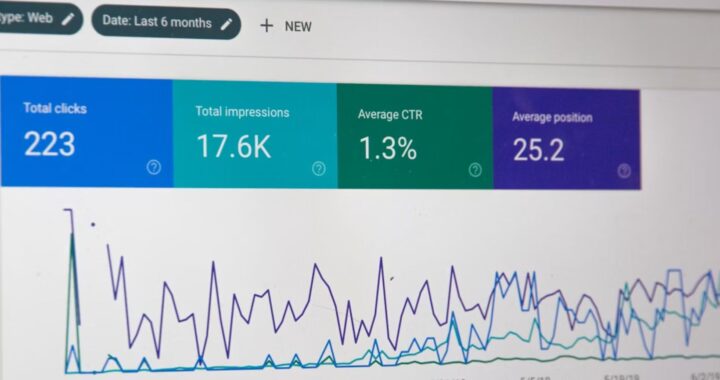Building the Telco Playbook: Connect, Delight, Beyond

Building the Telco Playbook: Connect, Delight, Beyond
Telcos are at a turning point. Revenues are flat, customer expectations are rising, and digital-native competitors are redefining connectivity. Competing on coverage and price is no longer enough.
The problem isn’t effort — many operators have launched apps and new offers — it’s outdated systems and slow processes that keep them from moving at digital speed.
The path forward is shifting from telco to techco: from utility provider to agile, product-led company.
Circles captures this evolution in its Connect, Delight, and Beyond framework, guiding operators to modernize their core, redesign the customer experience, and expand into new services in a sequence that makes transformation both scalable and sustainable.
Understanding the Three Pillars
Transformation doesn’t happen all at once. It follows a sequence.
Telcos that attempt to launch flashy new products before fixing their core are building castles on sand. You can’t “delight” without a solid network foundation. You can’t scale “beyond” if your app crashes under traffic or takes minutes to load.
This is why the order matters:
- Connect builds the technical agility.
- Delight leverages that agility to earn loyalty.
- Beyond monetizes that loyalty into new services and ecosystems.
Connect: Core Network Redesign
Let’s be honest: many telcos are still held hostage by their own infrastructure.
Legacy OSS/BSS stacks, vendor-locked architectures, manual provisioning — all of it slows innovation to a crawl.
A simple plan change or product launch might take weeks. That’s not sustainable in a world where nimble competitors ship updates overnight.

What the shift to a techco core looks like:
| Attribute | Legacy Telco Core | Techco Core (Cloud-Native) |
| Infrastructure | Hardware-bound, inflexible | Virtualized, elastic, cloud-first |
| Time to Launch | Months | Days or hours |
| Integration | Custom-coded | API-first, composable |
| Operations | Manual, siloed | Automated, DevOps-enabled |
Moving to a cloud-native core isn’t just about modern tech — it’s about gaining control.
When telcos control the stack, they control the roadmap. They can launch, test, iterate, and scale — without waiting on vendors or reinventing the wheel.
What Makes the Core Work
According to Circles’ work with operators globally, the most successful techcos tend to focus on four key actions:
- Disaggregate the Stack — Break down tightly coupled systems.
- Adopt Containerized Network Functions — Shift to CNFs orchestrated via Kubernetes.
- Expose Capabilities via APIs — Turn internal services into external enablers.
- Build an Internal Platform Team — Infrastructure becomes a product, not a cost center.
When the network becomes programmable, the business becomes agile. And agility is the currency of competitive advantage.
Delight: Customer-Centric Experiences
You’ve fixed the engine — now it’s time to design the experience.
This is where most telcos stumble. They launch apps with modern interfaces but dated processes behind them. You can’t mask a poor journey with a pretty design.
“Delight” is about making every interaction feel effortless, personal, and — dare we say — enjoyable.
Circles defines telco transformation through the Connect, Delight, and Beyond framework — a practical playbook for becoming a techco.
In this stage, the goal is to translate infrastructure agility into meaningful customer experiences that drive loyalty.
Common UX failures in telco today:
- Onboarding takes 5+ minutes and multiple steps
- Plan changes require support tickets
- Apps are cluttered and unintuitive
- Users get irrelevant or generic promotions
These aren’t minor annoyances. They’re growth killers.
Customers don’t leave because your prices are higher. They leave because it’s just too hard to get what they need.
What Good Looks Like
Delight-led telcos:
- Allow eSIM activation within 60 seconds
- Offer usage dashboards with contextual insights
- Send proactive alerts (e.g. “You’re using more data this week — want to upgrade?”)
- Enable support inside the app — not across five channels
The Metrics That Matter
Delight isn’t fluff. It moves numbers:
| Metric | Impact from Delight |
| NPS (Net Promoter Score) | Improves with clarity, transparency, support |
| Churn | Drops with personalization & self-service |
| Conversion | Rises with frictionless onboarding |
| LTV (Lifetime Value) | Increases with upsell-ready UX |
It’s not about building a beautiful app. It’s about building an intelligent, responsive journey that adapts to the customer — not the other way around.
Beyond: New Digital Services
Once you’ve earned loyalty, you earn the right to offer more.
This is the Beyond phase — where telcos become lifestyle platforms, not just utilities. Connectivity becomes the gateway to everyday digital services.
Think of it like this: if your users are logging into your app regularly, you’re sitting on prime real estate. So why just sell data?
Examples of Beyond services:
- Fintech: Mobile wallets, micro-loans, pay-later services
- Entertainment: Streamlined content bundles (e.g. Netflix, Spotify)
- Travel: In-app roaming control, travel SIMs, concierge tools
- Commerce: Curated product deals inside telco apps
- Health: Partner-led telehealth appointments, prescriptions
Telcos have the distribution. They have the billing relationship. And most importantly — they have trust.
The Platform Play
Techcos don’t try to build everything themselves. Instead, they turn their apps into ecosystems — via APIs and partnerships.
| Capability | Techco Enabler |
| Fintech services | Embedded finance rails |
| Partner onboarding | Plug-and-play API layers |
| Data insights | Unified customer analytics |
| Microservices | Agile, modular architecture |
| Monetization | Revenue share & cross-sell |
This turns the telco into a platform — where every customer interaction is a monetization opportunity.
How Telcos Become ‘Techcos’
Becoming a techco isn’t just a tech upgrade — it’s an operating model shift.
Yes, cloud-native cores and digital UX are essential, but true transformation means rethinking your role: from infrastructure provider to product- and platform-led business. That’s not evolution — it’s reinvention.
The best techcos don’t just launch apps or rebrand; they build a repeatable model rooted in:
- Speed over scale
- Autonomy over approval
- Learning over legacy
- Ecosystem over ego
Telco vs. Techco: What Changes
| Category | Telco | Techco |
| Org Structure | Siloed departments | Cross-functional product squads |
| Tech Stack | Vendor-locked, hardware-bound | Cloud-native, API-first, modular |
| Decision-Making | Centralized, top-down | Decentralized, empowered teams |
| Product Development | Waterfall, long cycles | Agile, iterative, user-driven |
| Revenue Model | Connectivity (ARPU) | Ecosystem & experience (CLTV) |
| Talent Philosophy | Industry veterans | Tech-first, startup mindset |
Conclusion
Telecom is no longer defined by infrastructure. Connectivity is expected; experience is the differentiator. Legacy models will fall behind, but techcos can unlock new growth.
The Connect, Delight, and Beyond framework shows the path: modernize the core for agility, turn that agility into loyalty, and extend loyalty into digital ecosystems.
This isn’t about another app or promotion — it’s about redefining what a telco is and how it creates value. Those that make the leap won’t just keep pace; they’ll set the standard for the future of connectivity.

 How Online Blackjack Combines Strategy, Design, and Modern Technology
How Online Blackjack Combines Strategy, Design, and Modern Technology  From Code to Conversion: How Smart Web Design Drives Business Growth
From Code to Conversion: How Smart Web Design Drives Business Growth  From Slots to Live Dealers: The Best Game Types to Try at Crypto Casinos
From Slots to Live Dealers: The Best Game Types to Try at Crypto Casinos